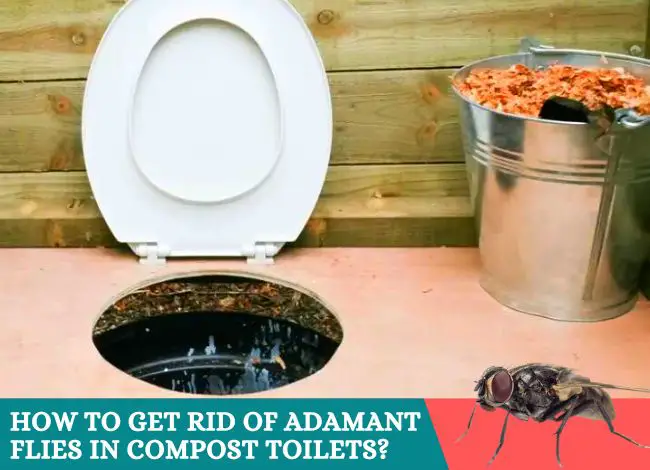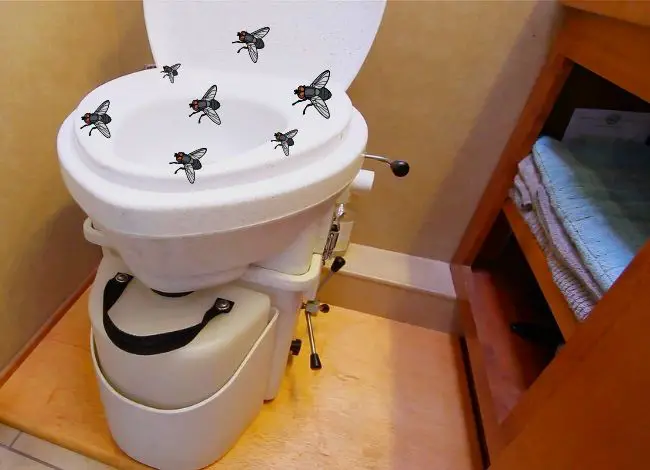
One of the most frustrating issues with composting toilets is the presence of flies. These pests are not just annoying—they are also attracted to composting systems due to the lack of water and decomposing organic matter. Composting toilets, while eco-friendly, can sometimes create an environment ideal for fruit flies and other insects if not properly maintained.
While fruit flies are not harmful to your compost, their rapid reproduction can lead to overwhelming infestations. In large numbers, they can become a major nuisance. Compost bins, especially if not sealed or managed properly, can become breeding grounds for germs, bacteria, and unwanted pests.
To control the fly problem effectively:
- Ensure all compost and garbage bins are sealed tightly.
- Clean and empty collection containers regularly.
- Use separate, optimized bins for plastics and non-organic waste to avoid cross-contamination.
Though fruit flies are manageable, they can be difficult to eliminate completely once they establish themselves. Follow this article for proven methods to prevent and eliminate flies in composting toilets.
What Are Flies and Why Are They a Problem in Composting Toilets?
Flies are small flying insects often found near composting toilets due to the presence of decomposing materials. Though they don’t directly contaminate the compost, their presence can lead to unsanitary conditions and irritation. The warm and moist environment inside compost toilets can attract flies and encourage breeding.
Why Does My Composting Toilet Have Flies?
There are several reasons why flies may invade your compost toilet:

- Lack of proper sealing: Flies can enter through openings if the toilet is not well-sealed.
- Toilet lid left open: Always keep the lid closed to reduce fly access.
- Unscreened vents: Vents without mesh screens can allow insects to enter and breed inside.
- Moist conditions: Excess moisture can accelerate decomposition and attract flies.
How to Prevent and Eliminate Flies in a Compost Toilet
Here are some practical solutions to control and prevent fly infestations:
- Install Fine Mesh Screens: Cover toilet openings and vents with mesh screens to block flies, mosquitoes, and even butterflies from entering.
- Keep the Lid Closed: Always shut the lid when the toilet is not in use.
- Use a Fly Trap: A fly trap with bait and a sticky substance can catch and kill flies effectively. Place it near the toilet or compost bin.
- Apply Disinfectant Spray: Regularly disinfect the toilet’s interior and exterior using a safe cleaning solution to eliminate lingering germs and pests.
- Maintain Proper Composting Balance: Avoid overly wet compost and make sure to balance green and brown materials to reduce odor and attraction for insects.
How to Get Rid of Flies in Compost Toilets?
If you’re struggling with flies in your compost toilet, you’re not alone. Compost toilets can attract flies if not maintained properly. Fortunately, there are several effective ways to keep flies away and maintain a clean, odor-free environment.
1. Eliminate Food Sources
One of the most important steps is to prevent any food waste from entering the compost toilet. Flies are naturally attracted to organic matter, so make sure only human waste and toilet paper go into the system. Avoid disposing of kitchen scraps or any other food items in the compost pile.
2. Use Fly Traps
Fly traps are a practical solution for managing flying insects around your compost toilet. You can place fly traps above or near the compost pile to catch flies as they hover. These traps are available at most garden supply stores. Some fly traps use attractants and sticky surfaces to capture flies instantly.
3. Apply Natural or Chemical Fly Repellents
There are many fly repellent sprays available, including natural and chemical options. Some of these not only deter flies but also work as deodorizers, leaving your compost toilet smelling fresh. Always choose a safe and eco-friendly product that’s suitable for composting systems.
4. Cover the Compost Pile
Covering the compost pile is one of the most effective ways to stop flies from breeding. You can use layers of carbon-rich materials like sawdust, coconut coir, or shredded paper. This creates a barrier between the waste and the air, making it harder for flies to access and lay eggs.
5. Install a Fly Swatter or Electric Zapper
For quick action, you can use a fly swatter or electric zapper near the compost toilet area. While this won’t prevent infestation, it helps eliminate adult flies that are already present.
6. Add Fresh Organic Matter Wisely
When adding new material to your compost, make sure it’s well-mixed and covered properly. Avoid adding too much wet material, as it may create the perfect breeding ground for flies. Maintaining the right balance of green and brown compost materials is key to preventing fly problems.
Conclusion
If you’re frustrated by flies invading your compost toilet, don’t worry—these simple and effective solutions can help. Start by keeping the area clean and ensuring the compost is properly covered. Add fly traps nearby, use repellents, and follow a consistent maintenance routine.
By following these proven methods, you can significantly reduce or even eliminate flies from your compost toilet. These minimal-effort tricks will help you maintain hygiene and comfort without allowing hazardous flies to take over. We hope this guide helps you enjoy a cleaner, more fly-free composting experience.
We are really lucky to have a hard-working, multi-skilled plumber on our team. Collin D. Gallegos, a professional plumber who has worked with us since 2012, is an expert in vent, septic, and drainage systems. He is a Certified Master Plumber and has worked on various commercial plumbing projects. He usually helps our readers resolve plumbing and pipe-related issues with a proper DIY troubleshooting and repair guide.